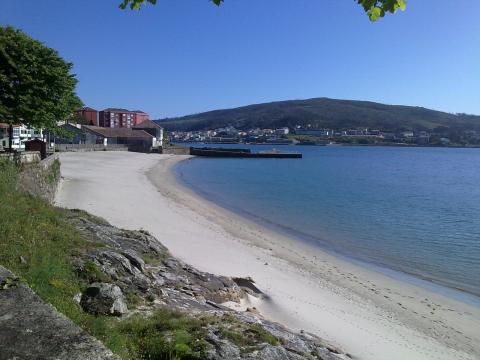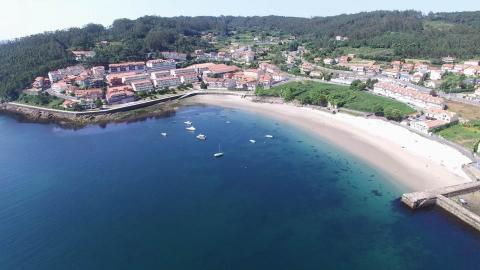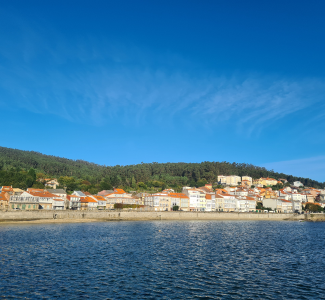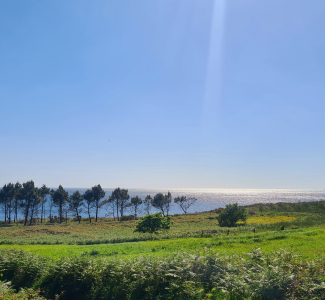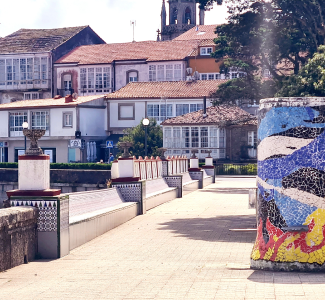What to see in Corcubión
Corcubion, land of calm and bravery
Cultural Heritage
Cultural Heritage
San Marcos’ Church
Architectural heritage
Location
Plaza Párroco Francisco Sánchez
Chronology
- Main chapel: 14th century
- Nave and vault: second quarter of the 15th century
- Transept and sacristy chapels: first third of the 18th century
- Second sacristy, baptistery and façade: last quarter of the 19th century
Style
marine gothic, except for the chapels and the transept, which are baroque, and the façade, which is neo-gothic
Authors
only the author of the neo-Gothic façade is known: Domingo Rodríguez Sesmero
Architectural structure
The church is organised on a rectangular hall plan with a single nave and a rectangular main chapel. The nave is divided into four sections by three pointed arches with edges. The arches are supported by semi-columns finished off with capitals decorated with schematically carved leaves. The nave has a wooden gabled roof. The main chapel is covered with a dome vault (of Byzantine influence) that runs over diagonal ribs turned upside down on columns
San Marcos’ Church has been declared an Asset of Cultural Interest. It preserves Romanesque remains of a previous temple in the main chapel, as well as in its corbels. Most of the construction belongs to the Gothic period and was built in several stages from the beginning of the 14th century. At the beginning of the 18th century the chapels of the transept were built. The one on the Epistle side was dedicated to Nuestra Señora del Socorro and the Souls. It was founded by Phelipe de Pazos and his wife Lucía Freire de Andrade. The one on the Gospel side is dedicated to Nuestra Señora del Carmen and was founded by Francisco de Navas y Espínola in 1715, as the inscription on the thread of the entrance arch indicates.
This church went through several disasters and the first one was caused by the Napoleonic troops' attack on Corcubión during the War of Independence in 1809. In this attack they razed the town and the church was not got out of that, setting fire to its entire interior. Due to the poor economic situation at that time, repairs could not be made until 1811. Later, in 1833, the church tower was affected by a hurricane, which knocked the church tower down to the bell and part of the rostrum. Then, in 1969, a lightning struck the tower, which also damaged it. But the worst thing happened on the 19th of March 1885, St Joseph's Day. During the Mass, another lightning bolt hit the upper central part of the tower, causing it to fall on the façade and the roof of the church, destroying part of the façade, the southern wall and the top of the main altar, also caving in the first section of the nave and breaking all the glass and bells.
The parish church of Corcubión is presided over by the impressive image of San Marcos da Cadeira, a Gothic carving from the Venetian school that can be dated to the second half of the 15th century.











